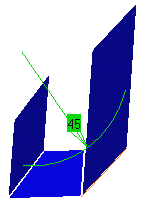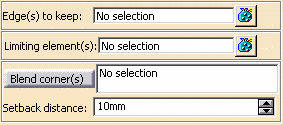Edge fillets are useful to provide a transitional surface along a sharp internal edge of a surface.
This task shows how to create a constant radius fillet along the
internal edge of a joined surface.
The fillet surface is obtained by rolling a sphere over the selected edge.
Open the EdgeFillet1.CATPart document.
-
Click Edge Fillet
 .
.The Edge Fillet Definition dialog box appears. 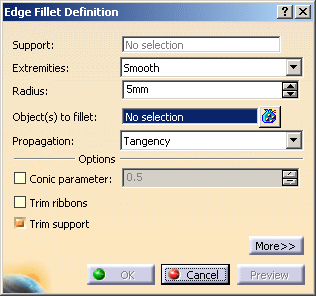
-
Select the edge to be filleted.
You can also select a face, provided there is no ambiguity as to the edge(s) to be filleted.
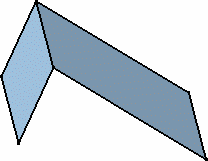
-
Use the combo to select the desired type of extremity for the fillet:
-
Straight: no tangency constraint is imposed at the connecting point between the fillet and the initial support, generating sometimes a sharp angle
- Smooth: a tangency constraint is imposed at the connection between the fillet surface and the support surfaces, thus smoothing the connection
- Maximum: the fillet surface is limited by the longest selected edge
- Minimum: the fillet surface is limited by the shortest selected edge
(Refer to Shape Fillets) -
-
Enter the value of the fillet Radius.
A preview of the fillet appears. 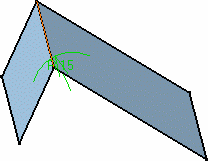
-
You can choose the Propagation type:
-
Tangency: the fillet is propagated up to the first edge that is not continuous in tangency.
-
Minimal: the fillet is propagated up to the first geometric limitation.
-
Intersection: the fillet is propagated to all the edges that have been generated by intersecting the features.

-
-


-
You can check Trim support to relimit the support elements and assemble them to the fillet.
-
Click OK to create the fillet surface.
The surface (identified as EdgeFillet.xxx) is added to the specification tree. 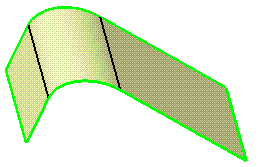

Note that the selection of the feature prevails over the selection of the sub-element.
To select a sub-element, you need to apply the ''Geometrical Element'' filter in the User Selection Filter toolbar.
For further information, refer to Selecting Using A Filter in CATIA Infrastructure User's Guide.
Keeping Edges
If you have difficulties selecting the edge, use the up/down arrows to display the preselection navigator.
Limiting Fillets
-
Once the edge to be filleted has been selected, and the radius keyed in, click Preview then More>>.
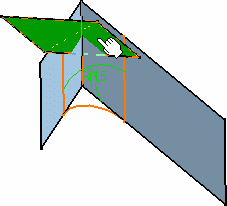
-
Click in the Limiting element(s) field, then select the trimming element(s).
These elements can either be surfaces, planes, or points on edges. An arrow indicates which portion of the fillet is to be retained. 
- You can use one or more limiting elements.
- You can define a limiting element just by clicking a point on one of the selected edges to be filleted.
-
Click on this arrow to inverse it, if needed, to retain the opposite side of the fillet.
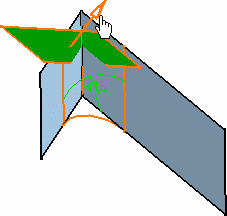
-
Click OK to create the limited fillet.
In the illustration, the limiting surface has been hidden. 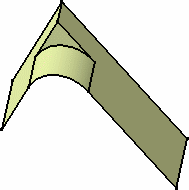
You can create limiting elements just by clicking on the edge to be filleted. The application displays this element as a blue disk. 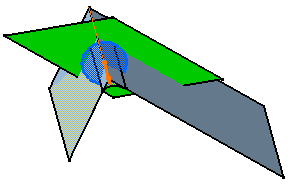

- You can select planes or points as limiting elements. Points must be located on the edge to be filleted and they must have been created using the On curve point type available in the Point Definition dialog box.
- Make sure the limiting
element is not larger than the initial element, as illustrated
here. If so, decrease the size of the limiting element as prompted
by the warning message.

Ignoring Edges
Creating Tangent Intersection Edges
Trimming Overlapping Fillets
![]()
-
Click Edge Fillet
 and select the edges at the base of the
cylinder and the one along the vertical surface.
and select the edges at the base of the
cylinder and the one along the vertical surface.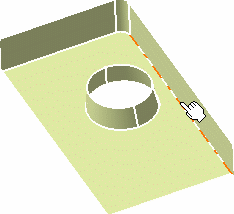
-
Click Preview.
The two fillets clearly overlap. 
-
In the Edge Fillet Definition dialog box, check Trim ribbons and click OK.
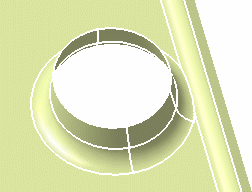
Note that Trim ribbons is available with the Tangency and Intersection edges propagation mode: - In Minimal mode, Trim ribbons is grayed,
as it is implicitly active. The results would be trimmed fillets,
and no propagation.
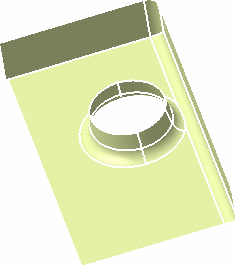
- In Tangency mode, with Trim ribbons
deselected, the fillets intersect, with no trimming, and the
propagation is performed.
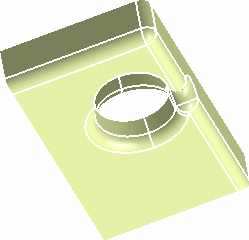
- In Tangency mode, with Trim ribbons
checked, the fillets are trimmed and the propagation is performed.
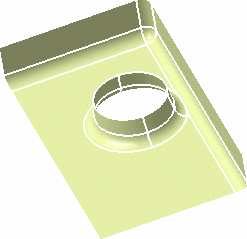
- In Minimal mode, Trim ribbons is grayed,
as it is implicitly active. The results would be trimmed fillets,
and no propagation.
Filleting Volumes
![]()
-
Click Edge Fillet
 .
.The Edge Fillet Definition dialog box appears. -
Select the edge to be filleted.
-
Set the Radius to 10mm.

-
Click OK to create the fillet volume.
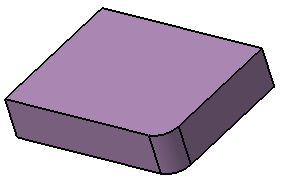

Extremities and Trim support are grayed out. They cannot be used with volumes.
![]()
